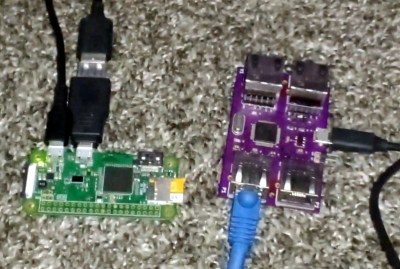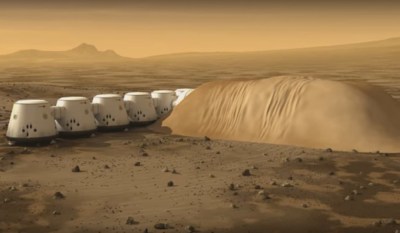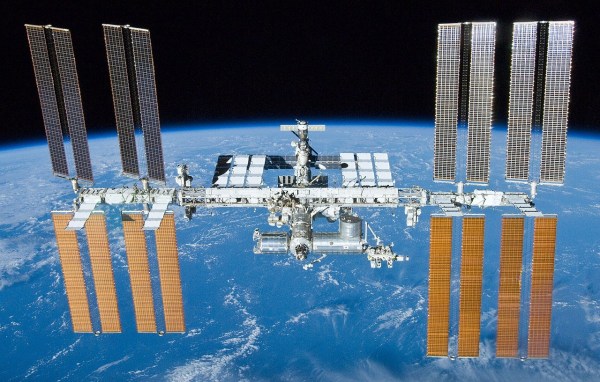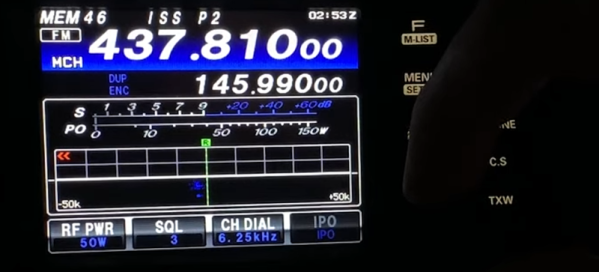If development platforms were people, Google would be one of the most prolific serial killers in history. Android Things, Google’s attempt at an OS for IoT devices, will officially start shutting down on January 5, 2021, and the plug will be pulled for good a year later. Android Things, which was basically a stripped-down version of the popular phone operating system, had promise, especially considering that Google was pitching it as a secure alternative in the IoT space, where security is often an afterthought. We haven’t exactly seen a lot of projects using Android Things, so the loss is probably not huge, but the list of projects snuffed by Google and the number of developers and users left high and dry by these changes continues to grow. Continue reading “Hackaday Links: December 20, 2020”
iss67 Articles
Space Is Radioactive: Dealing With Cosmic Rays
Outer space is not exactly a friendly environment, which is why we go through great lengths before we boost people up there. Once you get a few hundred kilometers away from our beloved rocky planet things get uncomfortable due to the lack of oxygen, extreme cold, and high doses of radiation.
Especially the latter poses a great challenge for long-term space travel, and so people are working on various concepts to protect astronauts’ DNA from being smashed by cosmic rays. This has become ever more salient as NASA contemplates future manned missions to the Moon and Mars. So let’s learn more about the dangers posed by galactic cosmic rays and solar flares. Continue reading “Space Is Radioactive: Dealing With Cosmic Rays”
Spacing Out: A Big Anniversary, Starlink Failures Plummet, Lunar Cellphones, And A Crewed Launch
After a couple of months away we’re returning with our periodic roundup of happenings in orbit, as we tear you away from Star Trek: Discovery and The Mandalorian, and bring you up to date with some highlights from the real world of space. We’ve got a launch to look forward to this week, as well as a significant anniversary.
Orbital Tracking On The NES
It’s easy to dismiss the original Nintendo Entertainment System as just, well, an entertainment system. But in reality the 6502 based console wasn’t so far removed from early home computers like the Apple II and Commodore 64, and Nintendo even briefly flirted with creating software and accessories geared towards general purpose computing. Though in the end, Mario and friends obviously won out.
Still, we’re willing to bet that nobody at Nintendo ever imagined their plucky little game system would one day be used to track the course of a space station in low Earth orbit. But that’s precisely what [Vi Grey] has done with his latest project, which is part of his overall effort to demonstrate the unexpected capabilities of the iconic NES. While you’ll need a bit of extra hardware to run the program on a real console, there’s no fundamental trickery that would have kept some developer from doing this in 1985 if they’d wanted to.

If you want to see your own 8-bit view of the International Space Station, the easiest way is with an emulator. In that case, [Vi] explains how you can load up his Lua script in Mesen or FCEUX to provide the ROM with the necessary tracking data from the Internet.
To run it on a real NES you’ll not only need some type of flash cart to get the ROM loaded, but also a TAStm32 board that’s used for tool-assisted speedruns. This allows the computer to essentially “type” the orbital data into the NES by emulating rapid controller button presses. That might seem like a tall order, but it’s important to note that neither device requires you to modify the original console; the code itself runs on a 100% stock NES.
If tracking spacecraft isn’t your thing, perhaps you’d be more interested in the some of the work [Vi] has previously done on the NES. We’re particularly fond of his polyglot ROM that is a ZIP file of its own source code.
SpaceX Sending Tom Cruise To The Space Station In 2021
Several months after NASA Administrator Jim Bridenstine confirmed the project was in the works, sources are now reporting that Tom Cruise and director Doug Liman will officially be making the trip to the International Space Station in October of 2021 to film scenes for an as of yet untitled movie. Cruise and Liman previously worked together on the science fiction spectacle Edge of Tomorrow in 2014, which may give us a hint at what the duo are planning for their trip to the final frontier.
Industry insiders claim that the two film makers and potentially a female co-star will fly aboard a SpaceX Crew Dragon capsule under the command of Michael López-Alegría, a veteran astronaut who currently holds the American record for number and duration of extra-vehicular activities (EVAs). The mission is being organized by Axiom Space, which previously announced they would perform a series of privately funded flights to the ISS as a precursor to constructing their own commercial expansion to the orbiting laboratory.

Of course, with more than a year before liftoff, anything could happen. SpaceX has been linked, officially or otherwise, to several private trips to space that literally and figuratively never got off the ground.
Mars-One was touting concept art that showed a fleet of modified SpaceX Dragons on the Red Planet as far back as 2012, and Elon Musk himself once announced that the Falcon Heavy would send private passengers on a trip around the Moon by the end of 2018. But to date, a pair of NASA astronauts have been the only humans to actually fly on SpaceX hardware.
Undoubtedly, some will see this flight of fancy as a waste of valuable resources. After all, there’s no shortage of scientists and researchers who would be more deserving of trip to a space than Jerry Maguire. But according to Bridenstine, the hope is that a big budget Hollywood film featuring scenes shot on the ISS could do for NASA what Top Gun once did for the Navy:
There was a day when I was in elementary school and I saw Top Gun. From that day, I knew I was going to be a Navy pilot. If we can get Tom Cruise to inspire an elementary kid to join the Navy and be a pilot, why can’t we get Tom Cruise to inspire the next Elon Musk? That’s what we need.
While we might not all agree on who the next generation of engineers should look to for inspiration, the impact that Top Gun had on Navy recruitment in the 80s and 90s is well established. If sending Tom Cruise to space for a few weeks might help inspire more kids to look into a STEM education, it’s probably worth a shot. Though it seems like Tom Hanks and his fellow Apollo 13 crew mates did a respectable enough job celebrating the incredible engineering behind NASA’s greatest triumph without actually going into orbit themselves.
ISS Ham Radio Repeater
There is a long history of spacecraft carrying ham radio gear, as the Space Shuttle, Mir, and the ISS have all had hams aboard with gear capable of talking to the Earth. However, this month, the ISS started operating an FM repeater that isn’t too dissimilar from a terrestrial repeater. You can see [TechMinds] video on the repeater, below.
The repeater has a 2 meter uplink and a 70 centimeter downlink. While you can use a garden variety dual-band ham transceiver to use the repeater, you’ll probably need a special antenna along with special operating techniques.
Docking With ISS Isn’t As Easy As You Might Think
Complexity is a funny thing. In prehistoric times, a caveman might float across a lake on a log. That’s simple. But as you add a rudder, a sail, or even a motor, it gets more and more complex. But if you add enough complexity — a GPS and an autopilot, for example, it becomes simple again. The SpaceX Dragon capsule actually docks itself to the ISS. However, the crew on the station can take over manually if they need to. What would that be like? Try the simulation and find out. If you don’t make it on the first, try, [Scott Manley’s] video below might help you out.
This isn’t a flashy Star Wars-style simulator. Think more 2001. Movement is slow and it is easy to get out of control. The user interface is decidedly modern compared to the old Apollo era
Continue reading “Docking With ISS Isn’t As Easy As You Might Think”

















